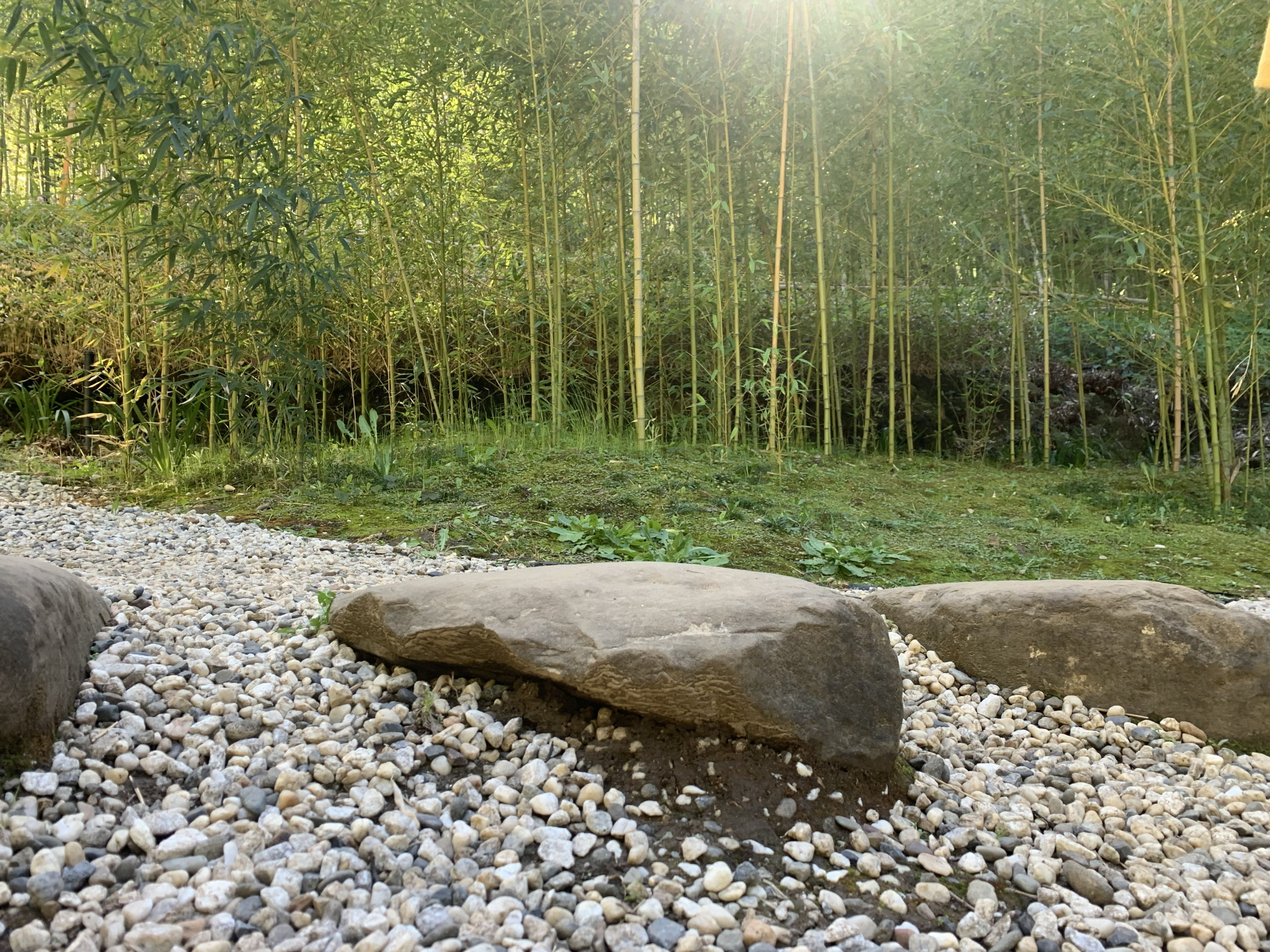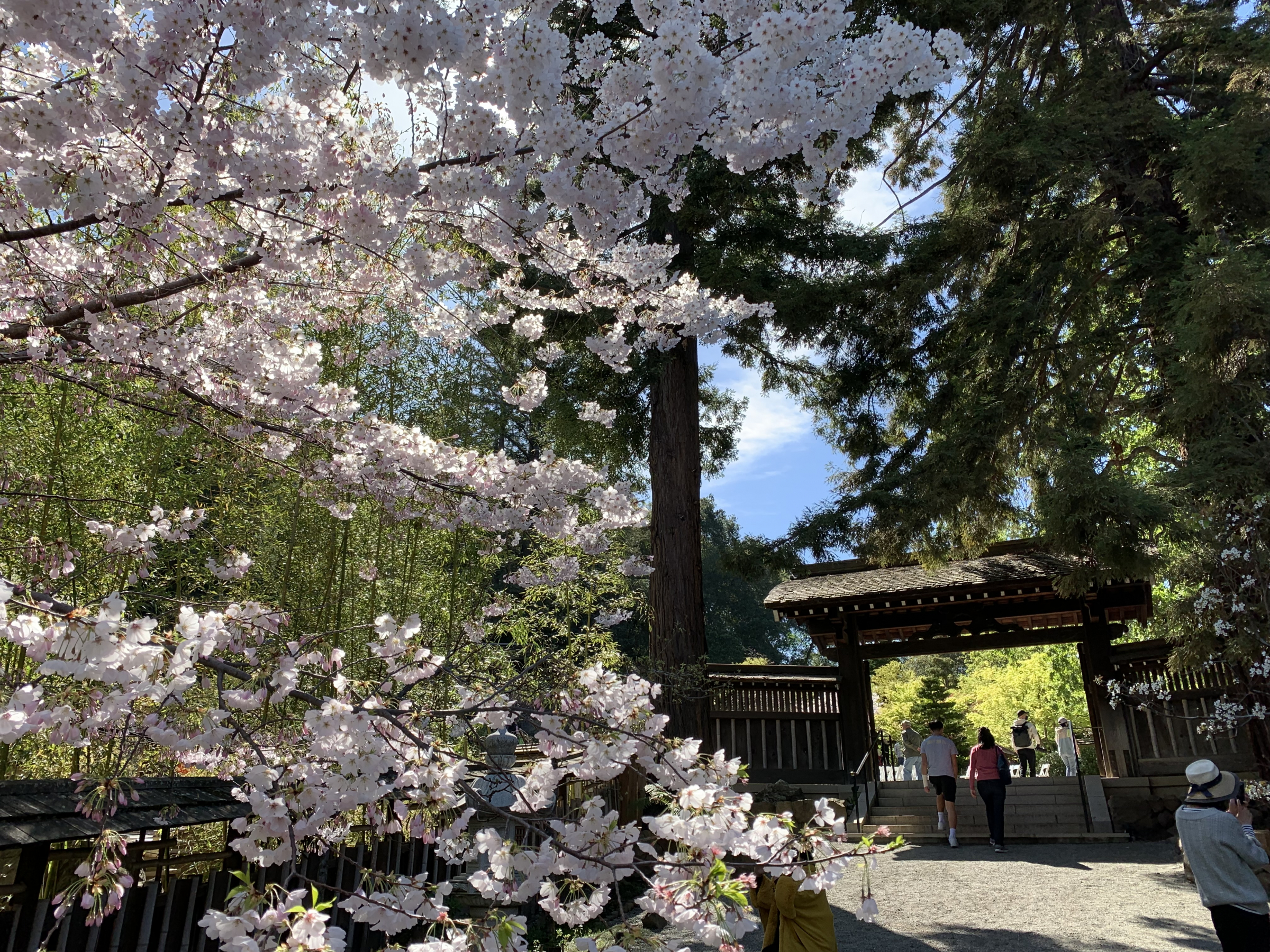Whether you're looking to create a rock garden, incorporate a few elements of Japanese design to your existing landscape or just want to add a bonsai to your home, there are plenty of gardens in San Mateo and Santa Clara counties to find inspiration — and tranquility. From a hillside planted with bamboo species from around the world to a 100-year-old estate with koi ponds, bridges and tea houses, the greater Peninsula area is home to Japanese-style gardens of various types and sizes that are open to the public. Here's a list of five local destinations where visitors can explore a traditional Japanese garden in person.
Hakone Estate and Gardens
21000 Big Basin Way, Saratoga
Founded more than100 years ago, the 18-acre Hakone Estate and Gardens is recognized as one of the oldest Japanese-style residential gardens in the Western Hemisphere. The Saratoga property is listed on the National Register of Historic Places. Hakone is made up of a variety of hillside gardens, historic buildings, multi-tiered waterfalls and koi ponds, strolling gardens and many other elements found in Japanese gardens.
The property includes four principal gardens. dry, tea, bamboo. Notable features include a bamboo garden, a Zen garden, tea houses, and the Cultural Exchange Center, which is an authentic reproduction of a 19th-century Kyoto tea merchant's house and shop. Admission is free to Santa Clara County residents on the first Tuesday of the month, March through October. Interested in more information about Hakone Gardens? Go to hakone.com.
Japanese Garden at San Mateo Central Park
50 E. 5th Ave., San Mateo
Designed in 1966 by landscape architect Nagao Sakurai of the Imperial Palace of Tokyo, the Japanese Garden at San Mateo Central Park maximizes every inch of square space to include all of the traditional elements typically found in a Japanese garden.
Features include a granite pagoda, a tea house, cherry trees, water elements and bridges, a koi pond and a bamboo grove. During spring and summer, visitors can watch public koi fish feedings.
If you're interested in seeing more of Sakurai's work, head to San Francisco: He also designed the Japanese Tea Garden in Golden Gate Park.
Japanese Friendship Garden at Kelley Park
1300 Senter Road, San Jose
Built in 1965, the Japanese Friendship Garden at Kelley Park was built in 1965 as a symbol of everlasting friendship between San Jose and its Sister City of Okayama, Japan.
Patterned after Okayama's famed Korakuen Garden, the 6-acre Friendship Garden was designed as a scenic promenade intended to provide visitors a new view at every turn of the path. Its three main ponds stocked with koi sent from Okayama in 1966 are located at different elevations in the park and are interconnected by streams with various styles of bridges, including a wooden zig-zag bridge meant to ward off evil spirits.
If you're interested in more details about various plants and other features at the Friendship Garden, check out the self-guided walking map.
Bamboo Garden at Foothill College
12345 El Monte Road, Los Altos Hills
Initially designed in 1989 as a small garden that one might see in front of a traditional Japanese tea room, the Bamboo Garden at Foothill College has grown into a collection of more than 70 bamboo species of all sizes, shapes and textures from around the world. Paths with signs identifying each species wind through the 2-acre garden, which contains nothing but bamboo. The garden is one of few in the United States to offer such a large and varied collection. In addition to the bamboo plants, the area features a meditation pavilion and a rock garden at the bottom of the hill.
Bonsai Collection at Filoli
86 Canada Road, Woodside
The historic Filoli estate has a sizeable collection of more than 50 bonsai that dates back to the early 1900s. These miniature replicas of full-grown trees became popular as garden ornaments at late 19th-century and early 20th-century estates after Japan began opening up to the rest of the world, creating an interest in Japanese-style art and landscape. Filoli's collection, which features both single-tree and forest styles, includes everything from juniper, pine, cryptomeria, elm and white fir to a 50-year-old redwood tree that is only 2 feet tall. Most of today's collection came as a series of donations made in the 1990s. Filoli is displaying highlights of its collection through May 31 as part of a special bonsai exhibit.
Read more: How to create your own Japanese-style garden




Comments